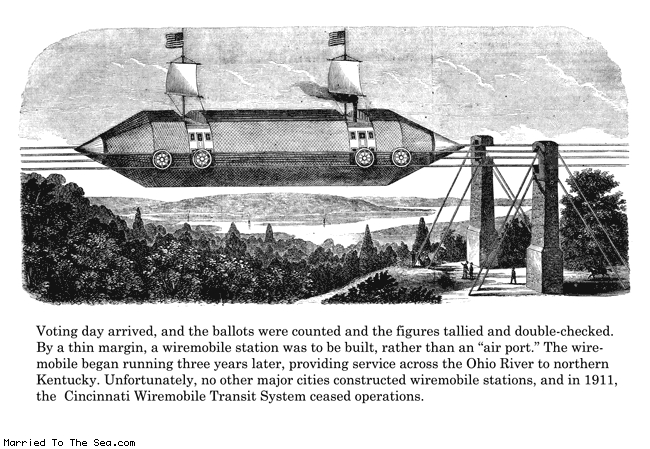The past couple weeks have brought us a flurry of futuristic, fanciful-looking mass transit ideas in the popular press. First, there was that straddling bus proposed in China:
Public transit in a metropolitan area is all about balance; if there aren’t enough public transit options, too many people choose to drive, clogging roadways and adding to pollution. But trains are expensive (and, if above-ground, contributors to traffic) and adding more buses to the road can magnify traffic woes further. Enter the 3D Fast Bus, a futuristic concept vehicle that carries passengers above street level, straddling the lanes below so traffic can pass freely underneath.

Then we learn of the Suntram, proposed by a Denver architect in response to that city’s traffic problems:
Officials in Denver have been trying for years to come up with a solution to their bad (and getting worse) traffic problems. Then Colorado architect Richard Morris thought of another alternative: a flying tram that carries cars and passengers high above the roads and bridges, at speeds of up to 100 miles per hour.
Enter the Suntram, a high-speed regional transportation system supported primarily by a catenary cable. Described by one onlooker as an “airplane connected to a ski lift,†the Suntram is run high above the ground on a stationary cable, and uses Morris’s newly-designed suspension system, which limits vertical acceleration.

Don’t get me wrong; I’m all in favor of developing new technology. The problem is, like the monorail of the 1960’s, these are technological solutions for what is essentially a political problem.
The problem we face today isn’t about figuring out how to move large numbers of people quickly through a dense urban setting. We already know how to do that, and it’s called rapid transit. Whether its in the form of a heavy rail subway such as the Washington Metro or light rail transit such as Portland’s MAX, it utilizes industry-standard, proven technology that has been around in one form or another for over 150 years. Various components such as propulsion and climate control have gotten more advanced over the years, but at the end of the day we’re still talking about steel wheels running on steel rails. Because it works.
The problem we face today is purely political, and it isn’t a problem that will be solved with pie-in-the-sky technological wonders. We have the technology to build a world-class rapid transit system, and as a nation, we have the money. The problem is, that money is being spent on things like bailouts for Wall Street, more pork-barrel highway construction that nobody wants or needs, and misguided military endeavors in third-world countries. Even with politicians in power who pay proper lip service to public transit and livable cities, nobody in a position of influence has yet to muster the political courage to challenge our spending priorities at the national level. There’s no need to re-invent the wheel; we just need our elected leaders to show some leadership.
Besides, hasn’t the Wiremobile thing been done already? And people say Cincinnati is behind the times.


